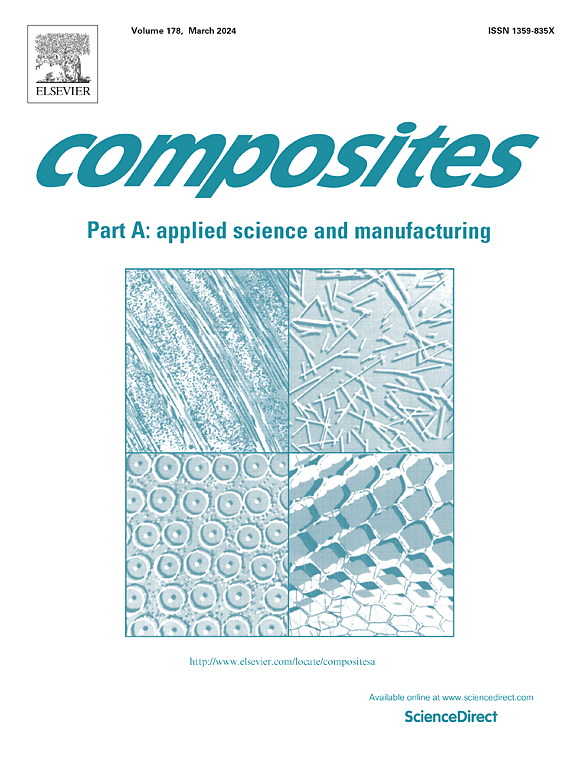Effect of automated tape placement pass frequency on matrix-dominated mechanical properties and microstructure of wound CF/PEEK
IF 8.1
2区 材料科学
Q1 ENGINEERING, MANUFACTURING
Composites Part A: Applied Science and Manufacturing
Pub Date : 2025-04-04
DOI:10.1016/j.compositesa.2025.108901
引用次数: 0
Abstract
Matrix-dominated properties, including Interlaminar Shear Strength, of carbon fibre/PEEK laminates manufactured by laser-assisted automated tape placement are highly influenced by processing parameters selected during manufacturing. In this study, both experimental analysis and a simulation of the thermal characteristics during manufacturing were utilised to determine the influence of processing parameters and laser pass frequency on the quality of the manufactured component. Two cylindrical mandrels with different diameters were used to vary the pass frequency along with various placement rates. While it was determined through mechanical simulations that the geometry of the mandrel did not cause subsequent variations in matrix-dominated mechanical properties, mechanical testing contradicted this finding. Increasing the pass frequency was determined to reduce the void content and increase the Interlaminar Shear Strength. Increasing pass frequency resulted in the substrate temperature remaining near the glass transition temperature for the matrix, with similar effects achieved to that of a heated tool, facilitating further void compaction and increasing the Interlaminar Shear Strength.

自动胶带放置通过频率对缠绕CF/PEEK基体主导力学性能和微观结构的影响
通过激光辅助自动贴带技术制造的碳纤维/PEEK 层压板的基体主导特性(包括层间剪切强度)受到制造过程中所选加工参数的极大影响。本研究利用实验分析和制造过程中的热特性模拟来确定加工参数和激光通过频率对制造部件质量的影响。使用两个不同直径的圆柱形心轴来改变激光通过频率和不同的贴片率。虽然通过机械模拟确定心轴的几何形状不会导致以基体为主的机械性能随之发生变化,但机械测试却与这一结论相矛盾。增加通过频率可减少空隙含量,提高层间剪切强度。增加通过频率可使基体温度保持在基体的玻璃化转变温度附近,达到与加热工具类似的效果,有利于进一步压实空隙并提高层间剪切强度。
本文章由计算机程序翻译,如有差异,请以英文原文为准。
求助全文
约1分钟内获得全文
求助全文
来源期刊

Composites Part A: Applied Science and Manufacturing
工程技术-材料科学:复合
CiteScore
15.20
自引率
5.70%
发文量
492
审稿时长
30 days
期刊介绍:
Composites Part A: Applied Science and Manufacturing is a comprehensive journal that publishes original research papers, review articles, case studies, short communications, and letters covering various aspects of composite materials science and technology. This includes fibrous and particulate reinforcements in polymeric, metallic, and ceramic matrices, as well as 'natural' composites like wood and biological materials. The journal addresses topics such as properties, design, and manufacture of reinforcing fibers and particles, novel architectures and concepts, multifunctional composites, advancements in fabrication and processing, manufacturing science, process modeling, experimental mechanics, microstructural characterization, interfaces, prediction and measurement of mechanical, physical, and chemical behavior, and performance in service. Additionally, articles on economic and commercial aspects, design, and case studies are welcomed. All submissions undergo rigorous peer review to ensure they contribute significantly and innovatively, maintaining high standards for content and presentation. The editorial team aims to expedite the review process for prompt publication.
 求助内容:
求助内容: 应助结果提醒方式:
应助结果提醒方式:


